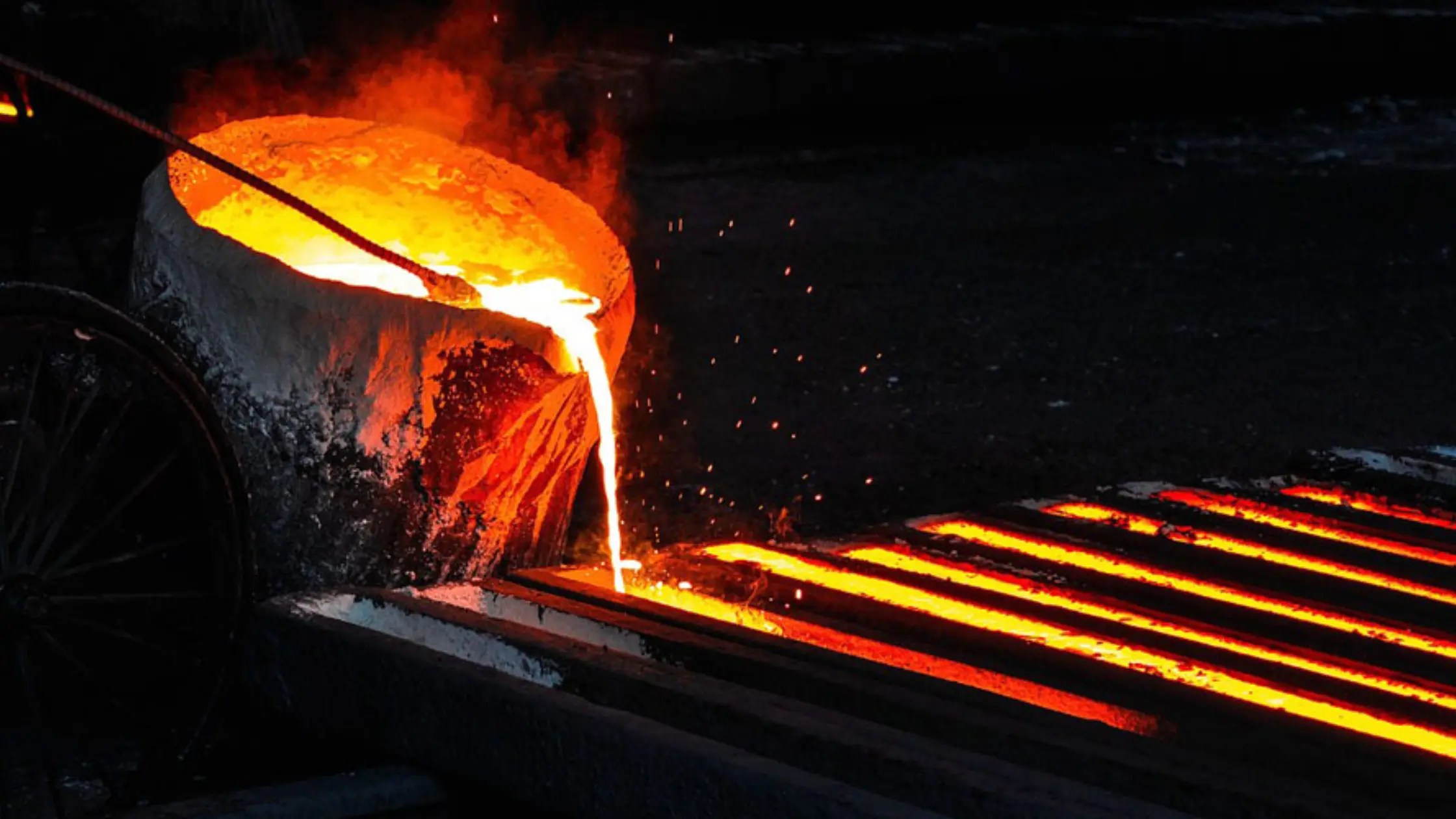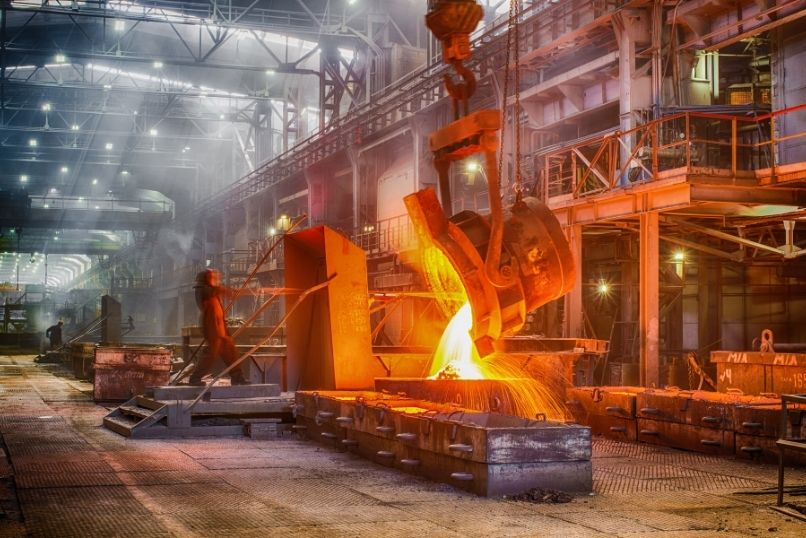How advanced simulation tools enhance accuracy in Metal Casting
The Important Functions of a Metal Shop: Solutions and Innovations Discussed
Steel shops work as important parts in the production sector, specializing in the conversion of raw materials into accurate steel products. They use varied casting methods, providing important services such as machining and prototyping. Advancements in innovation and sustainability better improve their abilities - Aluminum Foundry. Recognizing these growths and functions reveals the significant duty of factories fit modern-day manufacturing. What certain innovations are driving these modifications, and how do they effect total production efficiency?
Summary of Metal Foundry Procedures

The following stage entails melting, where the alloys are heated in heaters until they reach a liquid state. This molten steel is then meticulously put into mold and mildews created to form the end product. After cooling down, the strengthened steel is removed from the molds, adhered to by a series of ending up operations such as grinding, polishing, or machining to accomplish specific dimensions and surface top qualities.
Throughout these processes, quality assurance is necessary to ensure that the produced components meet industry criteria and requirements, inevitably bring about dependable and sturdy metal products.
Casting Methods and Their Applications
Numerous spreading strategies are employed in metal foundries to create parts with details forms and properties. Among the most common methods are sand casting, investment spreading, and pass away casting. Sand casting utilizes sand molds, making it economical and flexible for big elements. Financial investment casting, recognized for its accuracy, includes producing a wax pattern coated in a ceramic shell, perfect for detailed forms and smaller parts. Pass away spreading, which makes use of high-pressure to require molten steel right into molds, works for mass manufacturing of complex geometries.
These techniques offer various applications throughout industries, consisting of auto, aerospace, and equipment. Each technique offers distinctive benefits depending on the wanted product residential properties, price factors to consider, and production volume. Steel foundries pick the most proper casting technique based on job needs, ensuring the final products satisfy rigid top quality and performance standards - Aluminum Foundry. This variety in casting methods highlights the cutting-edge capabilities of contemporary metal factories
Machining Providers in Metal Foundries
While casting techniques lay the structure for component development, machining solutions in metal foundries play an essential function in refining and ending up these parts. Machining incorporates various processes such as milling, transforming, drilling, and grinding, guaranteeing that cast elements fulfill precise specs and resistances. This action is vital for boosting the mechanical buildings and surface area finish of the final product.
Shops use advanced CNC (Computer Numerical Control) makers to achieve high degrees of precision and repeatability. These modern technologies allow for complex geometries and elaborate styles to be understood properly. Furthermore, machining services can be tailored to suit various materials, including non-ferrous and ferrous steels, consequently widening the foundry's capabilities.
Inevitably, machining solutions not only contribute to the general quality and functionality of cast components but also play a critical role in boosting and lowering lead times performance in the manufacturing procedure.
Prototyping and Its Value in Production
Prototyping plays an important role in manufacturing by permitting the evaluation of design ideas before major production. Numerous methods, such as 3D printing and CNC machining, enable suppliers to produce accurate depictions of end products. This method substantially improves manufacturing effectiveness by determining possible issues early while doing so.
Advantages of Prototyping
In the domain of production, the advantages of prototyping prolong much beyond simple graph, offering as a crucial action in the product development procedure. Prototyping permits designers and designers to check concepts, recognize design flaws, and examine capability before mass production. This repetitive strategy decreases the danger of pricey errors and aids fine-tune designs based on real-world feedback. Additionally, models help with better interaction amongst stakeholders, making certain that everybody has a clear understanding of the designated last item. By speeding up the development timeline, prototyping also makes it possible for makers to react promptly to market demands, eventually boosting competition. To sum up, the advantages of prototyping are essential for attaining effective, reliable, and ingenious production outcomes.
Methods Utilized in Prototyping
The performance of prototyping counts heavily on the techniques employed throughout the process. Numerous techniques such as additive production, CNC machining, and sand casting are generally made use of to create models in metal factories. Additive production, or 3D printing, allows for the quick manufacturing of complicated geometries, promoting style versions. CNC machining provides exact control over measurements, ensuring that models satisfy precise requirements. Sand casting, on the various other hand, is beneficial for developing bigger models with intricate styles, making use of mold and mildews to shape liquified metal. Each technique lugs distinct advantages, allowing foundries to choose the most appropriate technique based on project needs. Inevitably, the selection of prototyping technique plays an important duty in refining layouts and advancing item advancement.
Influence on Manufacturing Efficiency
Although frequently neglected, efficient prototyping substantially increases production performance in manufacturing procedures. By permitting suppliers to evaluate and refine designs before major manufacturing, prototyping decreases errors and minimizes pricey rework. This repetitive technique enables the recognition of prospective style flaws early, guaranteeing that the final item meets specifications and performance criteria. In addition, prototyping facilitates far better communication amongst staff member, as physical models or simulations supply substantial recommendations for conversation and comments. Because of this, production timelines shorten, and source allocation becomes much more effective. In a competitive market, the ability to innovate rapidly while maintaining top quality is important, making prototyping a vital aspect in the production landscape, especially within metal foundries where precision is critical.
Technologies in Metal Foundry Technologies
Technologies in metal foundry technologies have substantially transformed the sector, especially with sophisticated casting methods and the combination of automation and robotics. These improvements improve effectiveness, precision, and the general top quality of steel products. As the demand for extra intricate styles and faster manufacturing times enhances, these innovations are becoming necessary for competitive shops.
Advanced Spreading Techniques
As metal foundries proceed to progress, sophisticated casting strategies become essential developments that enhance manufacturing effectiveness and material residential or commercial properties. Techniques such as financial investment spreading, lost foam spreading, and 3D printing are changing the market by enabling even more intricate layouts and decreasing material waste. Financial investment casting, known for its accuracy, enables makers to produce intricate geometries with very little machining called for. Aluminum Casting. Lost foam casting supplies similar advantages, making use of a foam pattern that evaporates during the pouring procedure, resulting in superb surface coatings. Furthermore, 3D printing is changing prototyping and tiny batch manufacturing, enabling fast layout iterations and personalization. Jointly, these advanced techniques not just improve production yet likewise boost the total top quality and performance of cast steel products
Automation and Robotics
Automation and robotics have ended up being important elements of contemporary steel factory procedures, driving considerable advancements in efficiency and precision. Automated systems enhance numerous processes, from material taking care of to spreading and finishing, lowering the dependence on manual labor. This shift permits increased production prices and constant top quality, as robots carry out repeated tasks with high precision. Additionally, automation enhances security by reducing human exposure to harmful atmospheres. Advancements such as Expert system and equipment discovering are being incorporated right into these systems, making it possible for anticipating upkeep and maximizing operations. As shops embrace these technologies, they not only boost operational efficiency yet also lower waste and power usage, positioning themselves competitively in a quickly developing market.
Sustainable Practices in Steel Foundries
While the steel factory sector has actually traditionally been connected with high energy usage and environmental impact, several centers are now welcoming sustainable techniques to minimize these impacts. One significant strategy entails the recycling of scrap metal, which decreases waste and conserves resources. By executing closed-loop systems, shops can lessen water usage and enhance energy effectiveness via warm recuperation innovations.
The adoption of cleaner modern technologies, such as electric heating systems, has actually ended up being more common, reducing greenhouse gas discharges. Foundries are likewise exploring alternate energy resources, including solar and wind power, to lower reliance on fossil fuels.
Additionally, workforce training programs concentrated on sustainability practices aid cultivate a society of environmental duty. These efforts not just enhance functional efficiency however additionally align with expanding customer demand for ecologically pleasant manufacturing. Collectively, these sustainable techniques setting metal factories as even more responsible factors to commercial progress.
Frequently Asked Concerns

What Products Are Typically Utilized in Steel Shops?
Metal shops typically use products such as iron, light weight aluminum, brass, and steel for casting processes. These metals offer the needed residential or commercial properties for different applications, guaranteeing resistance, stamina, and resilience to ecological consider ended up items.
How much time Does the Metal Casting Process Normally Take?
The steel casting process usually takes a number of days to weeks, depending upon elements such as complexity, production, and size volume. Each stage, consisting of pattern making, mold and mildew preparation, and cooling, adds to the general timeline.
What Are the Precaution in Steel Shops?
Precaution in steel foundries include personal protective equipment, proper air flow systems, normal safety training, threat interaction, and emergency situation action procedures. These practices intend to reduce risks connected with high temperature levels, hefty equipment, and harmful products.
How Do Foundries Make Certain High Quality Control in Their Products?
Foundries assure high quality control by carrying out rigorous testing protocols, including dimensional inspections, product analysis, and surveillance production procedures. Additionally, they follow market criteria and carry out normal audits to maintain uniformity and dependability in their items.
What Industries Heavily Count on Metal Factory Services?
Different sectors heavily rely upon metal shop services, consisting of automotive, production, construction, and aerospace. These markets depend on factories for producing top quality metal parts important for equipment, lorries, structures, and various industrial applications.
Steel foundries offer as essential parts in the production field, specializing in the conversion of raw materials into exact steel products. Steel foundry processes include a Aluminum Foundry series of complex actions that change raw products right into finished steel items. Numerous spreading strategies are used in steel foundries to create components with particular forms and properties. Metal foundries select the most suitable casting technique based on project demands, making sure the final products fulfill rigid high quality and efficiency requirements. As metal factories continue to evolve, sophisticated casting techniques emerge as pivotal developments that enhance production efficiency and product residential or commercial properties.